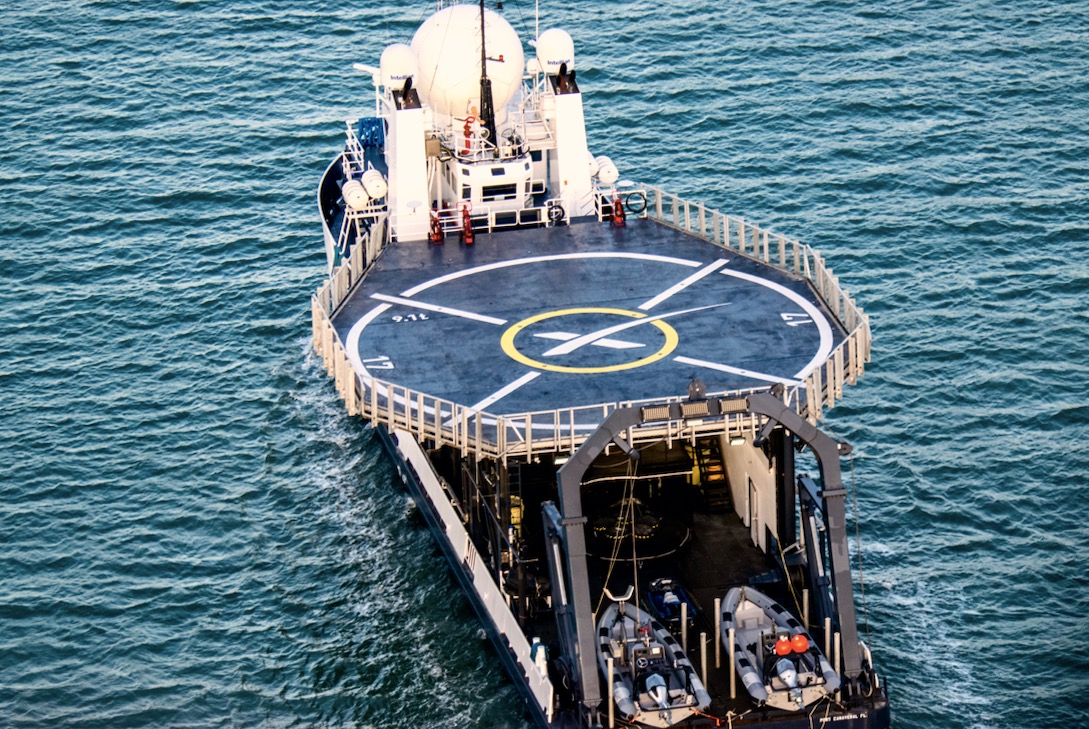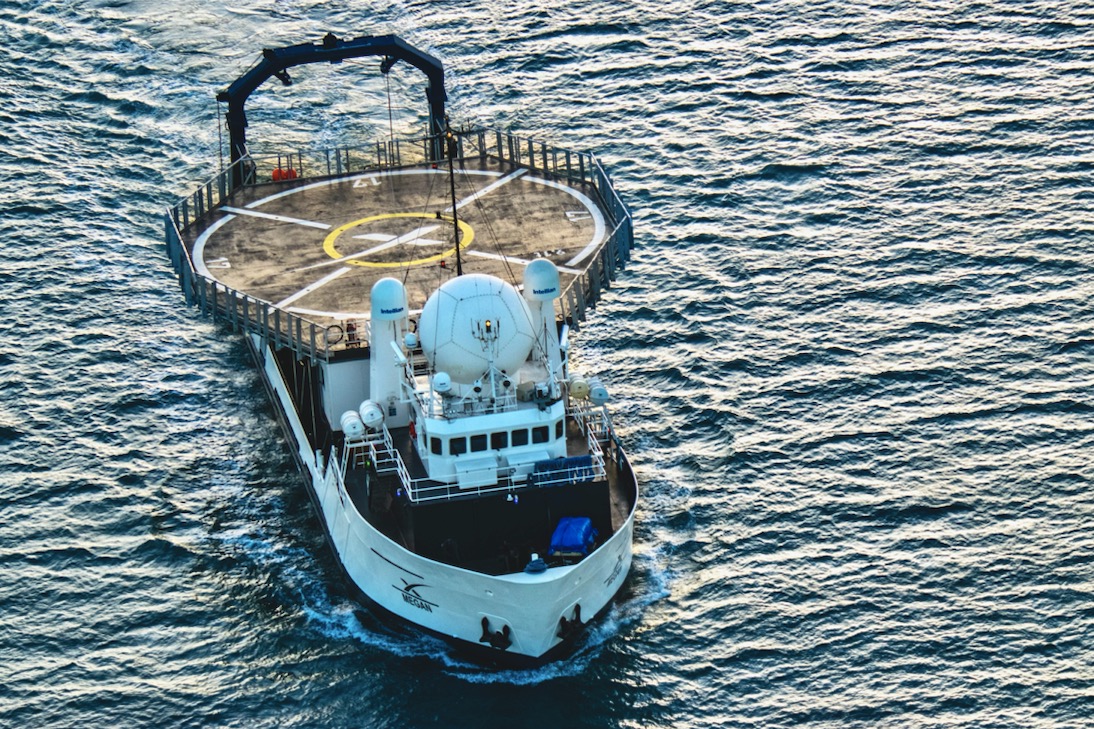See SpaceX recovery ship head out to retrieve Ax-1 Dragon capsule (aerial photos, video)
SpaceX's GO Searcher Dragon recovery ship got a new name before leaving port. She goes by Megan now.

PORT CANAVERAL, Florida — Just before dusk on Saturday evening (April 23), south of NASA's Kennedy Space Center, SpaceX's Dragon capsule recovery boat, named Megan, left port.
Space.com managed to capture some views from a helicopter of Megan as it headed out into the Atlantic Ocean, bound for a spot near the splashdown zone of the Dragon that flew the historic Axiom-1 (Ax-1) mission. The SpaceX recovery ship, formerly named GO Searcher, serves as a ride not only for the Ax-1 Dragon but also its four-person crew.
Ax-1, the first private, all civilian mission to the International Space Station (ISS), stayed at the orbiting lab for 15 days instead of the originally planned 10. Megan would have left Port Canaveral days before, but weather conditions at the splashdown site prevented the Ax-1 Dragon from undocking from the ISS and returning home on time.
Related: 8 ways that SpaceX has transformed spaceflight
That Dragon, named Endeavour, ended up undocking from the ISS at 9:10 p.m. on Sunday (April 24; 0110 GMT on April 25), just over 24 hours after Megan left Port Canaveral. Endeavour and its four crew members splashed down in the Atlantic off the coast of Jacksonville, Florida, at 1:06 p.m. EDT (1706 GMT) on Monday (April 25).
Upon reaching Endeavor's retrieval area, crews aboard the ship hoisted the capsule out of the water using a specialized crane on the vessel's stern. Another line, attached to the capsule from across the deck, pulled Endeavor aboard, ending the 17-day mission for her and her crew.
Endeavour occupied the same docking port assigned to the Dragon that will fly Crew-4, a crewed mission to the ISS that SpaceX is flying for NASA's Commercial Crew Program. Dependent on a successful review of Endeavour's flight data, Crew-4 is now scheduled to launch at 3:52 a.m. EDT (0752 GMT) on Wednesday (April 27).
Breaking space news, the latest updates on rocket launches, skywatching events and more!

Speaking with Space.com, NASA Certification Manager for the Commercial Crew Program Carla Koch outlined several of the key datapoints and observations crucial for giving Crew-4 the green light. In addition to what's known as a "quick look," where SpaceX teams search for obvious signs of distress on a vehicle, Koch emphasized the attention that will be given to Ax-1's parachutes. Koch cited past lagging issues witnessed in previous crewed Dragon returns.
"We had Crew-2 land right before Crew-3 [launched], and there was a concern with the parachutes," she said. "And so the teams went through and did their reviews and made sure we were good to fly Crew-3. We'll do the same thing after Axiom-1, before we launch Crew-4."
You can watch the Crew-4 launch, and many other mission milestones, here at Space.com when the time comes.
Follow us on Twitter @Spacedotcom or on Facebook.

Josh Dinner is the Staff Writer for Spaceflight at Space.com. He is a writer and photographer with a passion for science and space exploration, and has been working the space beat since 2016. Josh has covered the evolution of NASA's commercial spaceflight partnerships and crewed missions from the Space Coast, as well as NASA science missions and more. He also enjoys building 1:144-scale model rockets and human-flown spacecraft. Find some of Josh's launch photography on Instagram and his website, and follow him on X, where he mostly posts in haiku.
